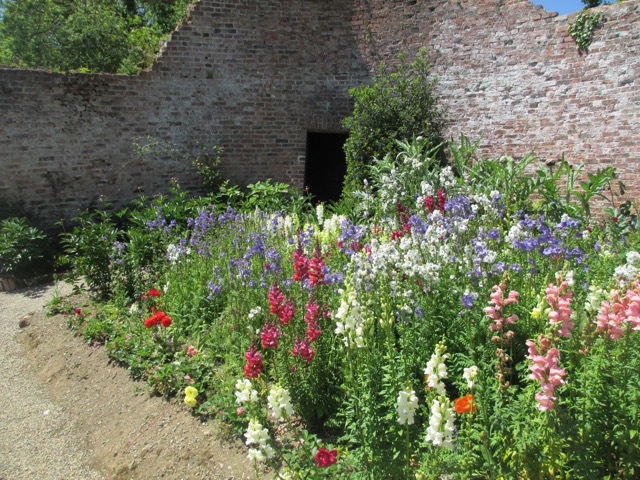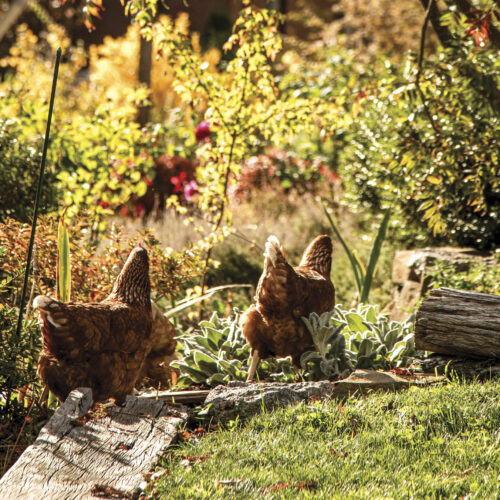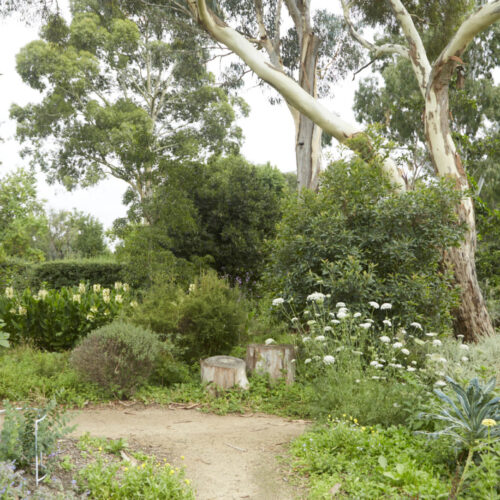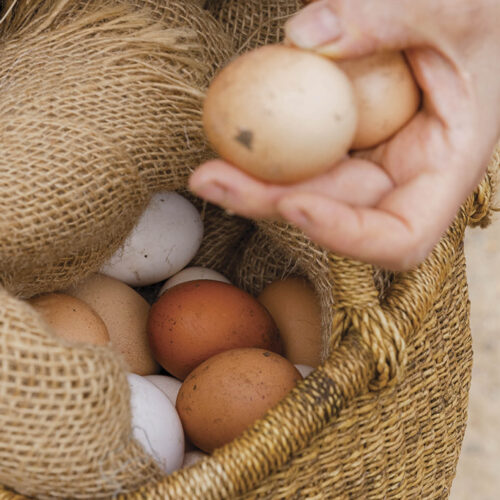Colclough walled garden
2015-07-15T03:04:09+10:00
A chance signpost and a meandering walk through Irish woodland led PENNY WOODWARD to a secret walled garden.
During a recent trip to Ireland we stopped at the ruins of Tintern Abbey in County Wexford. After admiring the remains of the abbey founded in the 12th century by William Marshal, we noticed a sign pointing to a walled garden. As in the UK, walled gardens are an important part of the houses and history of landed gentry in Ireland. This one was a surprise though as I hadn’t discovered any mention of it in the extensive research I did into Irish gardens before leaving home. So directed by the arrow we wandered down the path through the wooded valley admiring the dappled shade of the beech trees with a carpet of bluebells and wild garlic (ramsons) beneath. Just as we thought we’d taken a wrong turning we came to another arrow and a ruined stone cottage over-run by sweetly scented stocks of all colours. This is Rose’s cottage and was the home of, and named after, the last head gardener John Rose. We ambled along for another few hundred metres until we spied the walls and the arched entrance and finally were able to admire one of the most beautiful walled edible gardens I have seen.
This garden was originally established by the Colclough (pronounced coke-lee) family at the beginning of the 19th century. They lived in the abbey for 400 years after it was granted to them after the dissolution in the mid 1500s. In 1959 the last remaining member of the Colclough family granted the property to the Irish State. The garden was then abandoned for 40 years until 5 years ago when restoration was undertaken by a group of volunteers with funding from a range of organisations. The results of their endeavours are an absolute credit too them. The just over 1 hectare garden has been reconstructed based on what would have been there in 1838 with espaliered and free growing fruit trees, flowers of all descriptions and a cornucopia of vegetables. My passion is edible gardens and I was determined to see as many as I could while in Ireland, but was quite often disappointed as these gardens need massive amounts of maintenance to keep them in good condition. This beautiful garden was an exception, thriving with the many hundreds of hours of volunteer time devoted to its upkeep.
The wall was constructed 200 years ago with stone collected from nearby fields but the inner skin was built from bricks, hand made in the garden from the estuarine mud. There are two sections to the garden with a wall down the middle. The first half is full flowers and fruit trees, the second with edible plants. Being there at the beginning of spring, there were tiny apples and pears on the trees, multiple rows of potatoes, lots of herbs but mainly freshly planted seedlings in the mulch of the rest of the vegie gardens. The perennial borders however were in full bloom and the small stream that flows through the middle under arched footbridges burbled happily. The whole garden is organically managed (although not certified) and produce is sold to visitors to help cover costs, a tribute to what can be achieved by good will, good planning, and copious amounts of hard work.






